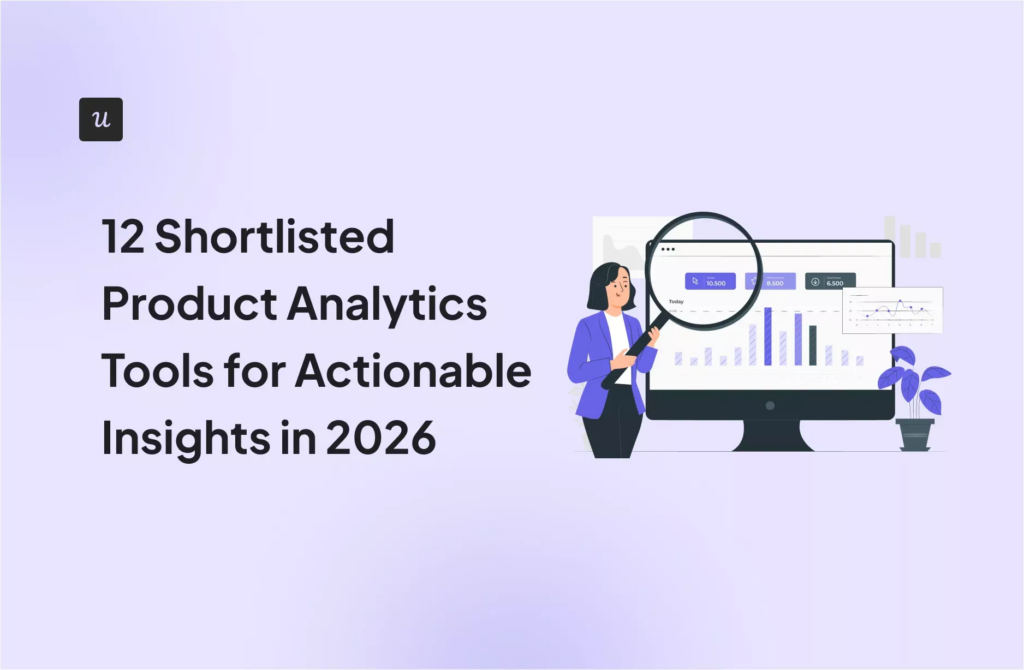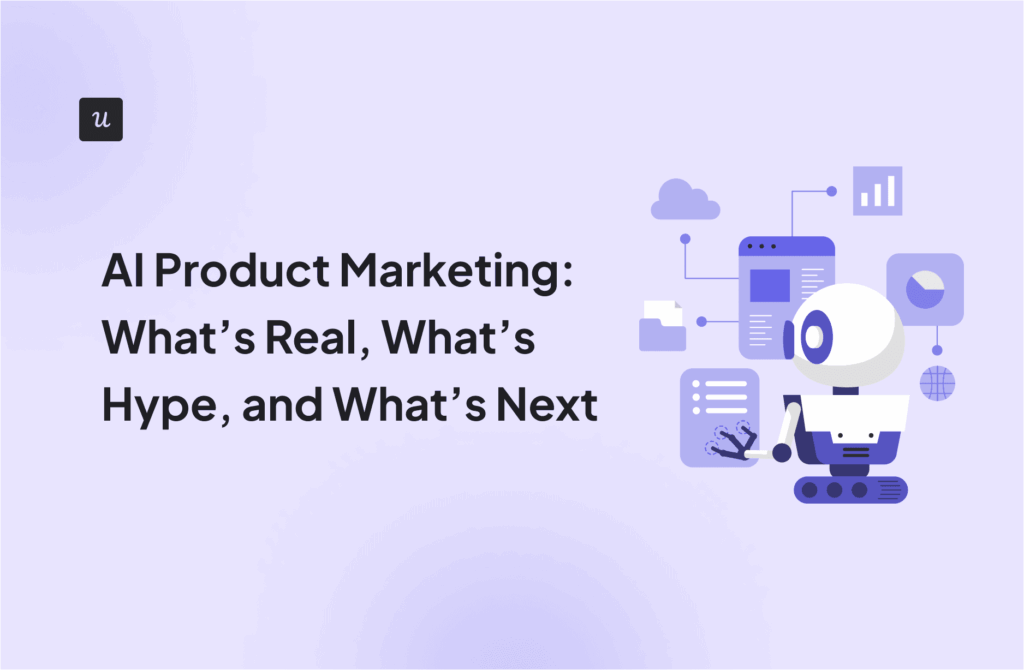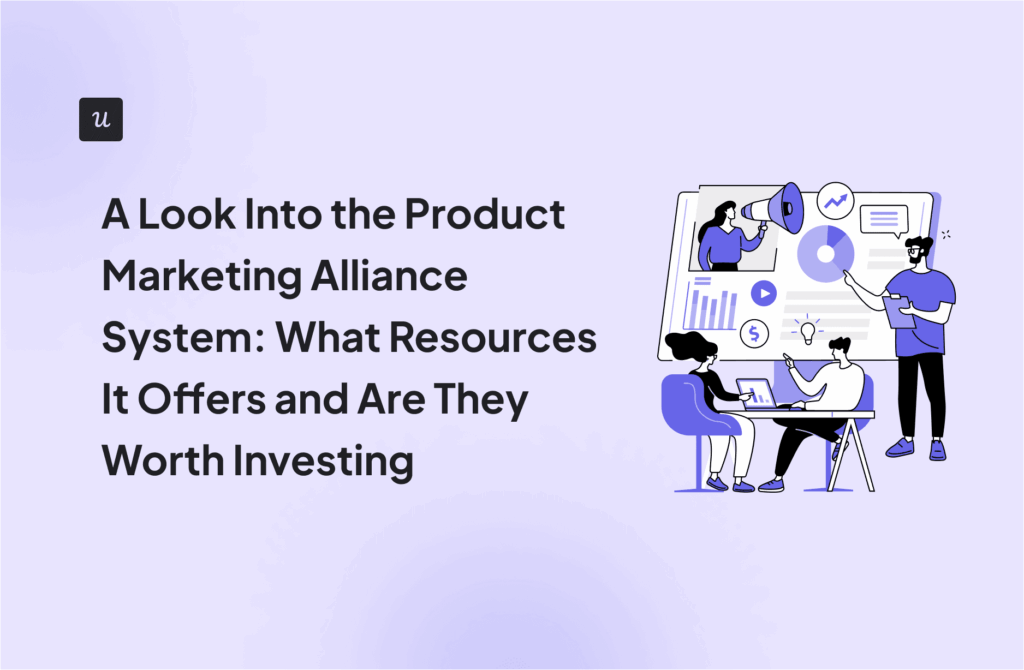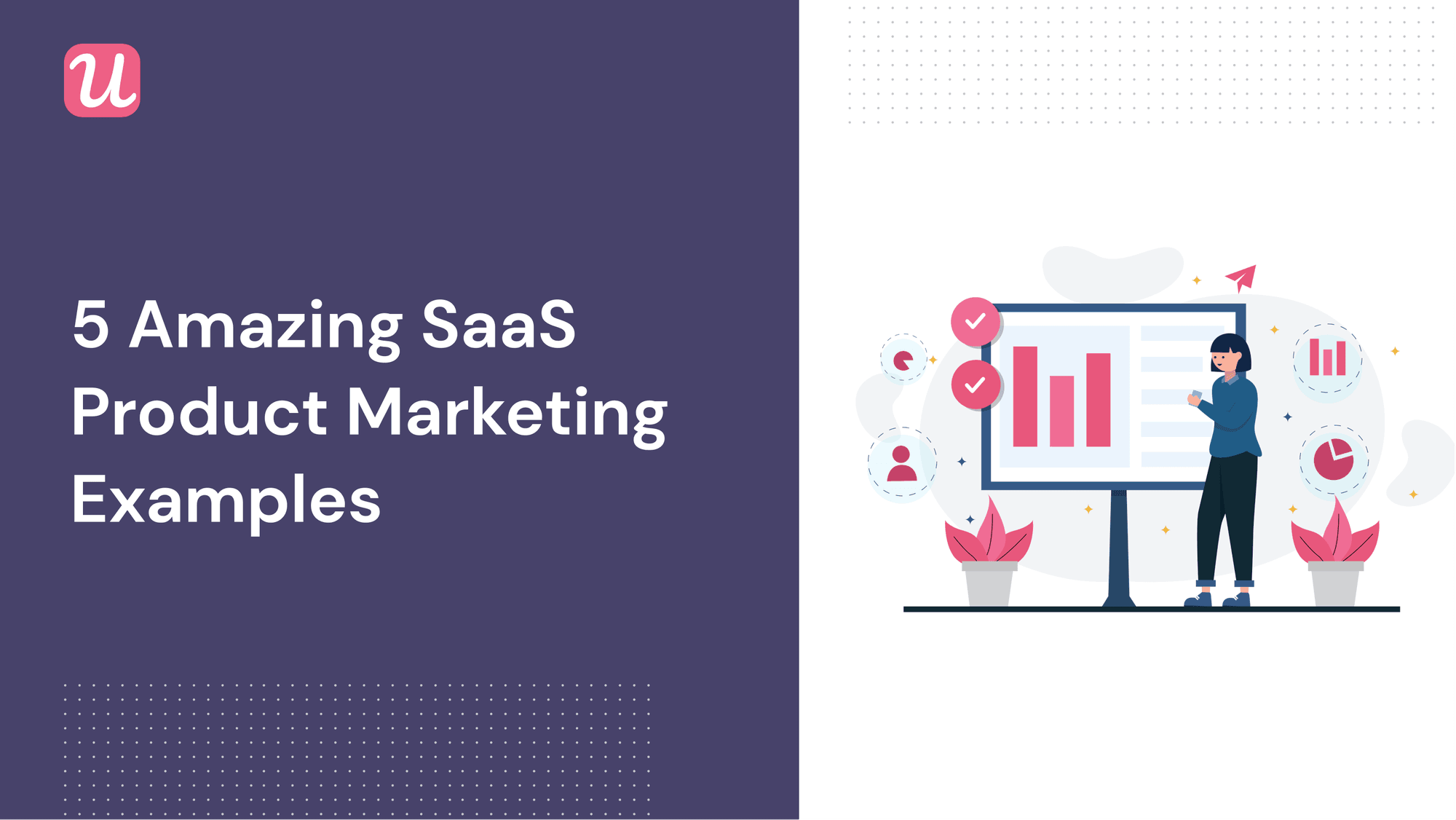
Looking for some SaaS Product Marketing examples you could implement to drive growth for your product?
There are some best practices you need to follow when it comes to a SaaS marketing strategy that works – it’s not enough to simply copy-paste what other SaaS companies are doing.
In this article, I’ve included both the SaaS marketing best practices and 19 best SaaS marketing examples to illustrate how others do it.
Let’s jump in.
What’s the main hurdle stopping your users from getting the most value out of your product?
How do you currently guide new users to their “Aha!” moment?
Which of these SaaS product marketing examples would help you most?
You’re ready to improve your user experience.
Based on your answers, you can drive growth by implementing contextual, in-app experiences. See how Userpilot makes it easy to create personalized onboarding and drive feature adoption without writing any code. These are powerful SaaS product marketing examples in action.
Try Userpilot Now
See Why 1,000+ Teams Choose Userpilot

What is SaaS product marketing?
SaaS product marketing is the strategies and tactics applied to software products and apps to create demand and drive the adoption and retention of said product by the end-user.
Unlike traditional marketing, which focuses on getting marketing qualified leads (MQLs) for the sales team, SaaS product marketing onboards the users during all stages of the user journey to continuously grow adoption.
SaaS Product marketing best practices
To do SaaS marketing right here are some best practices you can begin to follow:
- Shift towards a user-centered mindset
- Personalize your messages based on use cases and user personas
- Experiment, test, get feedback, and improve in a continuous loop
- Make data-informed decisions
These practices are especially important for product-led growth marketing, which is all about using the product itself as the main driver of acquisition, adoption, and retention.
So how can you drive growth following these best practices? Check our curated collection of SaaS marketing strategies and examples.
SaaS Product Marketing examples #1 – In-app onboarding
In-app onboarding is the user’s first impression of your product so it’s really important to make it a good one and give them a reason to return. The smoother their experience, the better. Check the following examples of SaaS in-app onboarding.
Jet Admin – Welcome screens to drive users to the Aha! moment fast
A welcome screen does exactly what it says on the tin – it welcomes new users to your product. But it can and should be more than that.
A good welcome screen greets your new user. A great welcome screen drives new users to their Aha! moment as is used as part of your marketing strategy. The Aha! moment is the first important step in in-app onboarding. It’s an emotional reaction your users have where they realize the value of your product – hence, the Aha! moment.
What’s mad is that according to our State of SaaS Onboarding 2021 research, 60% of SaaS businesses don’t utilize their welcome screen’s full potential and the remaining 40% don’t have one at all as part of their marketing strategy!
You’re doing yourself a huge disservice by not taking advantage of a great welcome screen.
Jet Admin, a no-code tool builder, has a fantastic example of a great welcome screen. It welcomes the new user and reinforces what their product does from the outset (building apps) by asking them to commit to starting a project by naming and describing it, demonstrating their product’s value right away.
A new user’s very first interaction with their product drives them straight to their Aha! moment!
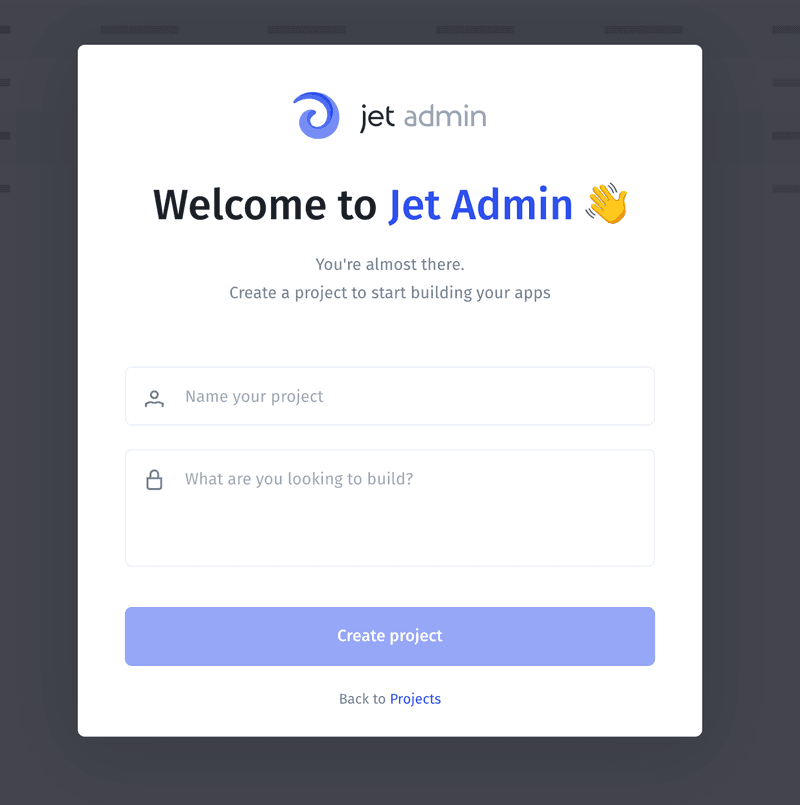
And it doesn’t stop there. The user is then given two path options for building their app.
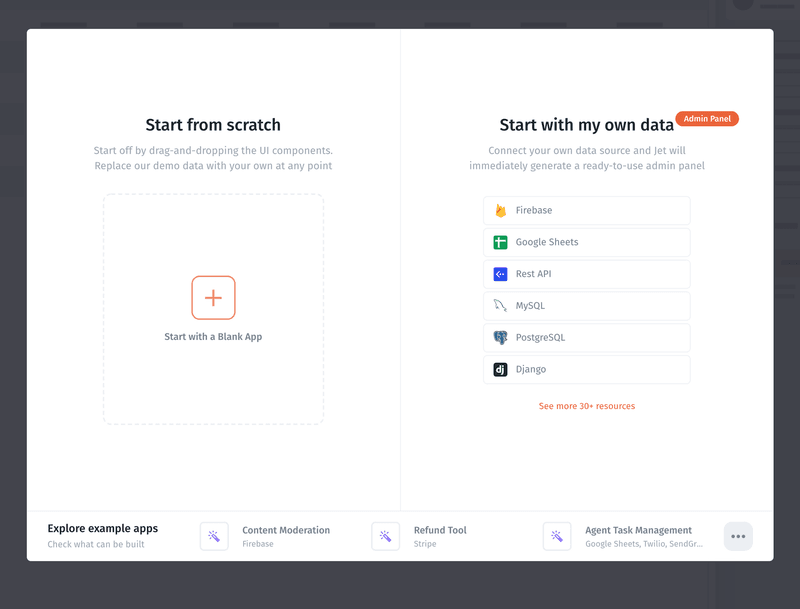
This not only gives new users freedom of choice but also enables them to choose a path customized to their individual needs. Users appreciate an individualized approach, so JetAdmin’s method is more likely to encourage adoption and retention.
Starting with a blank app can be intimidating – how are you supposed to know where to start? Without guidance, a third of users drop out before they’ve even begun!
To combat this, Jet Admin uses this empty state to help the user get started. They use targeted onboarding messaging to help the user build an app by dragging and dropping components – this stage’s Aha! moment, the feeling the user gets when they start to understand that a product will get their job done.
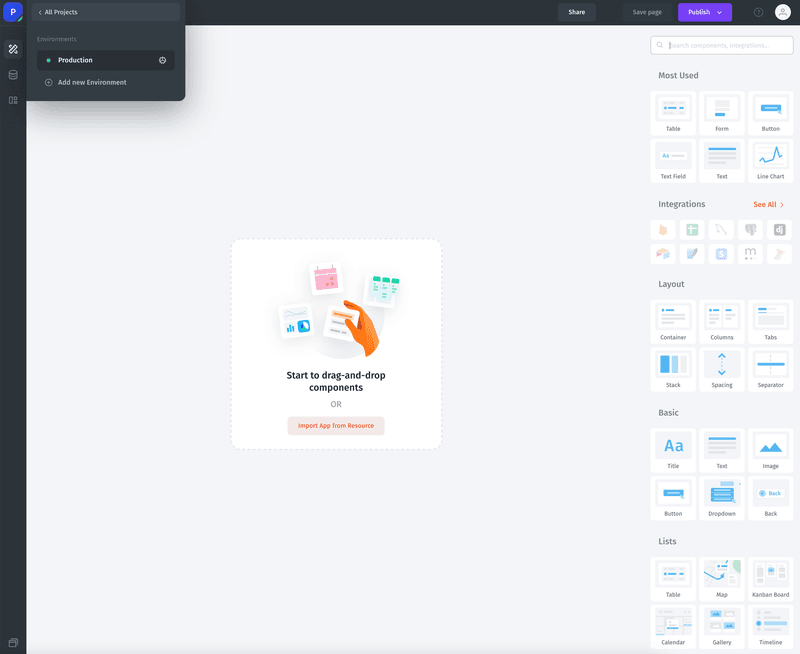
Asana – Onboarding walkthrough
Great user onboarding experiences have low friction and a short time to value plus are interactive, personalized, and contextual.
One of the best ways to introduce a new user to your product is through a walkthrough. These guided tooltips and instructions walk the user step by step through using the product.
Unfortunately, many SaaS companies go about walkthroughs the wrong way. Many use long product tours that walk potential customers through every feature of the product from the get-go – this can irritate and confuse users. Many first-time users may not have the attention or memory span to even retain the material, so all the valuable information you just dumped on them is lost!
Instead, follow a great onboarding walkthrough example from Asana.
Asana highlights the functionality of their product and collects relevant information on their user persona through a personalized series of questions.
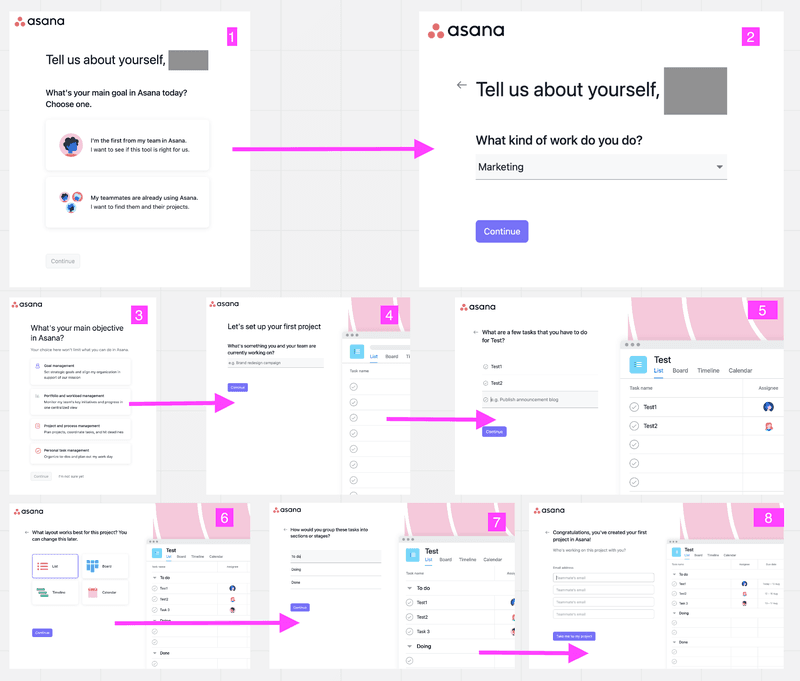
In the end, the first landing page inside the app that the user sees has their own content that immediately shows them how the app might help them get their job done.
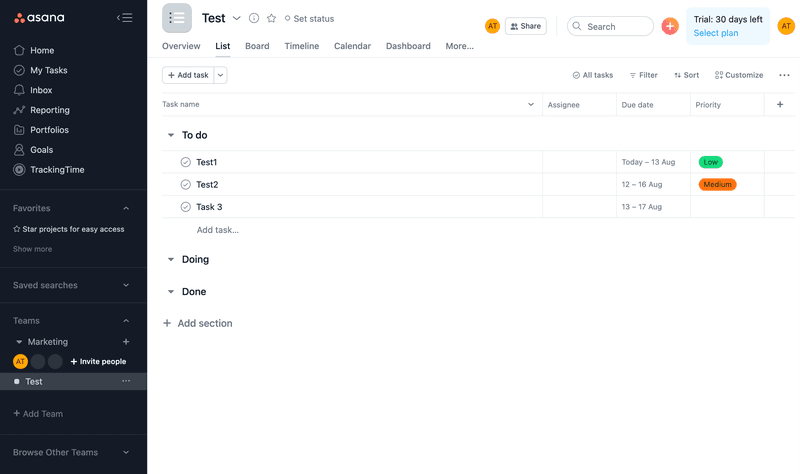
This is a marketing strategy that immediately reduces the time to value through personalized content replacing the empty state.
Monday.com – Onboarding microsurveys
Microsurveys are a quick and easy way to collect data about users. They are contextual and ask for specific, closed feedback: typical microsurvey questions are yes/no, a rating scale, and multiple-choice.
These microsurveys are an engaging way to obtain data such as:
- job-to-be-done
- role
- company
The answers they provide will help you improve the user’s experience with your product – this is done by personalizing their onboarding experience by catering to each use case and persona based on the information collected.
Monday.com is a great example of collecting user data with onboarding microsurveys.
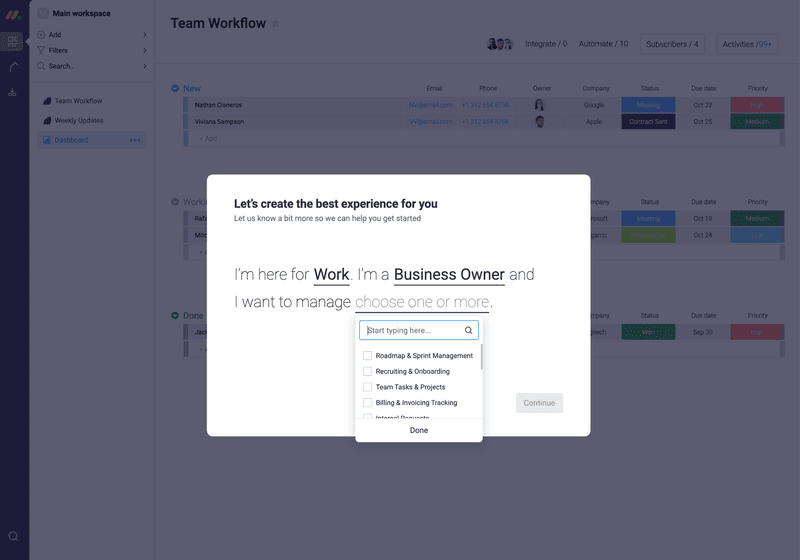
By disclosing questions one at a time, Monday makes sure the experience is enjoyable without overwhelming the user.
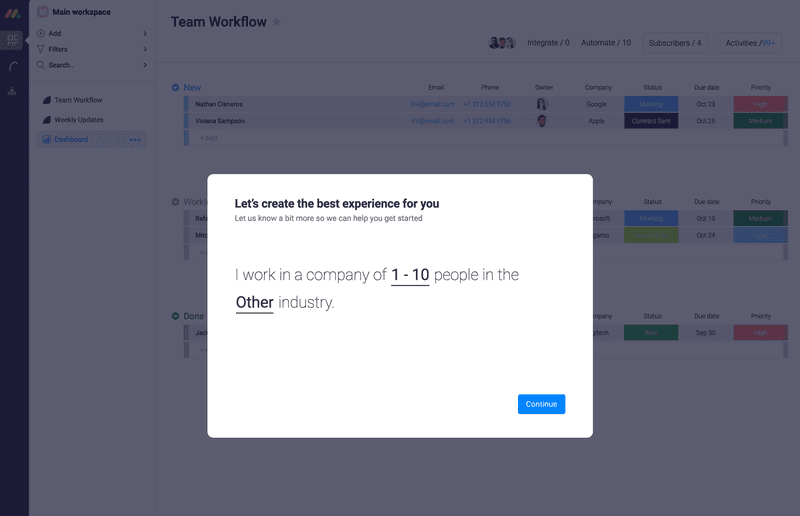
Loom – Use checklists to drive users to the activation point
There are many types of in-app messaging types you can use in the onboarding phase. Checklists are one of the most efficient tools to drive users to the activation point in their product adoption journey.
Loom, a video messaging for work app, uses a checklist. A self-described ‘efficient, expressive, effective way to communicate’, Loom’s six-point checklist guides the users in understanding how their tool works so they can experience the value it provides.
It also ends with an engaging CTA – ‘Invite a teammate: invite your team to collaborate and share videos more easily.
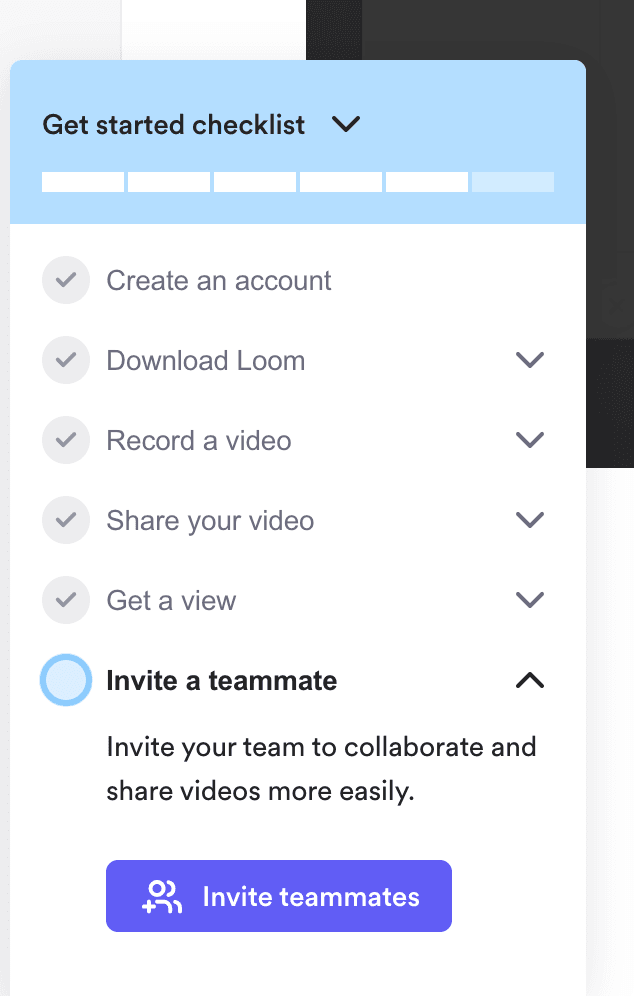
Asana – Gamified in-app experience
There are several creative and engaging ways to use in-app gamification as a marketing strategy for your SaaS company. In-app gamification does what social media and video games have been doing for years – rewards users for using the product.
Whether it be Facebook, Instagram, Minecraft, or a SaaS app, enabling users to unlock achievements with badges, likes, and extra privileges such as customizable skins appeals to their brain’s reward system. It literally floods their brain with dopamine – the more features they adopt, the better they feel.
It’s psychology 101. Social media and video games have been taking advantage of it for years – it’s time for SaaS to jump on the bandwagon!
Asana is a great example of an in-app gamification marketing strategy. Every time a user completes a task in their project management tool, a magical creature shows up to congratulate the user!
Not only is it cute and wholesome – it makes the user smile – but it reinforces repeated usage of the app as it signals success (completion of a task) and we all tend to repeat actions that drove success.
This will lead to brand affinity and loyalty as a result. Which leads to increased word of mouth.
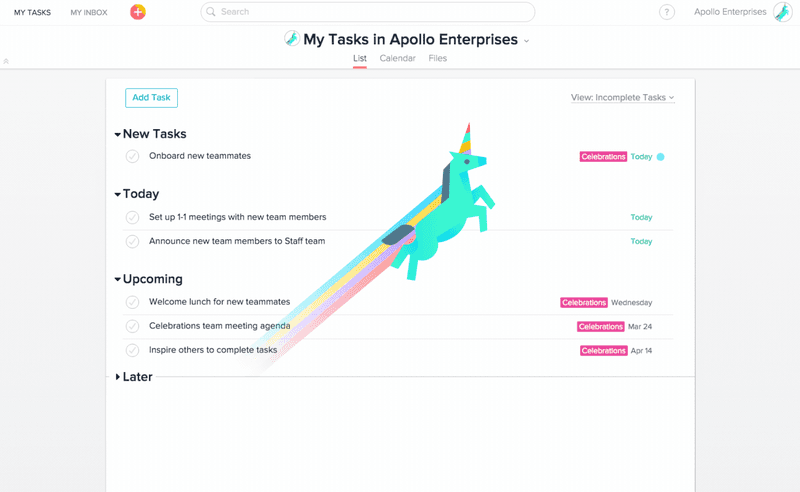
SaaS Product marketing examples #2 – Empty states
Empty states are an underused part of SaaS but they have so much potential. Check the following best saas marketing uses of an empty state.
Airtable – Shows us how to best use empty states
Empty states can be used to your advantage. As we mentioned in our blog post, empty states are typically filled up by demo content – made-up placeholder data that shows customers how a given product could be used for their specific use case.
While demo content can be useful, users usually clock pretty quickly that it’s being used as filler, and it might make them question the value of a product.
Airtable, an online collaboration platform for creating and sharing databases, uses empty states well. Instead of using demo content to avoid an empty state screen when the user first logs in, Airtable uses the space to push users to get started. They do this by offering multiple ways to get started to cater to different user needs.
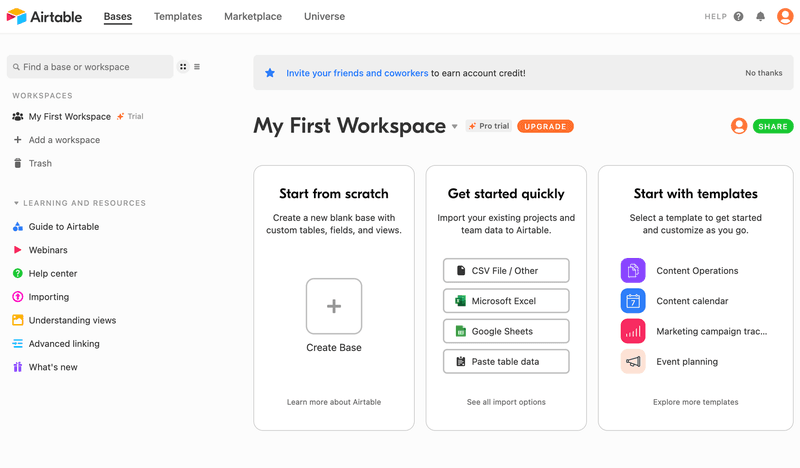
SaaS Product marketing examples #3 – Account expansion
So you’ve got your user in – now what?
Once they fully adopted your product, your marketing campaigns should focus on driving in-app account expansion and increase the revenue per month per user. Let’s check out some examples.
WeTransfer – Mixing inspiring users with account expansion
Loading pages are an under-used part of SaaS products. Loading pages are the screens users see while the app they’re using loads. They’re important because they confirm that the app is working and moving forward, and they can be used for several things – inspiring, entertaining, and educating the user, as well as reinforcing the product’s positioning.
It also means the user isn’t bored while they wait, meaning they’re less likely to exit the app and forget about it.
WeTransfer uses its loading page as an opportunity to promote its paid plan (converting freemium users to paid accounts qualifies as account expansion) – and they do it brilliantly.
WeTransfer is primarily used to transfer files that are too large for email but not all who use it actually pay for the PRO subscription plan – most people don’t even know there is a PRO plan or what its features are!
WeTranser really leverages their empty state while the files are uploading. Their goal, account expansion, is achieved by their non-intrusive content marketing which is designed to intrigue and delight you at the same time.
They reinforce what the product does with a fun and smart quiz.
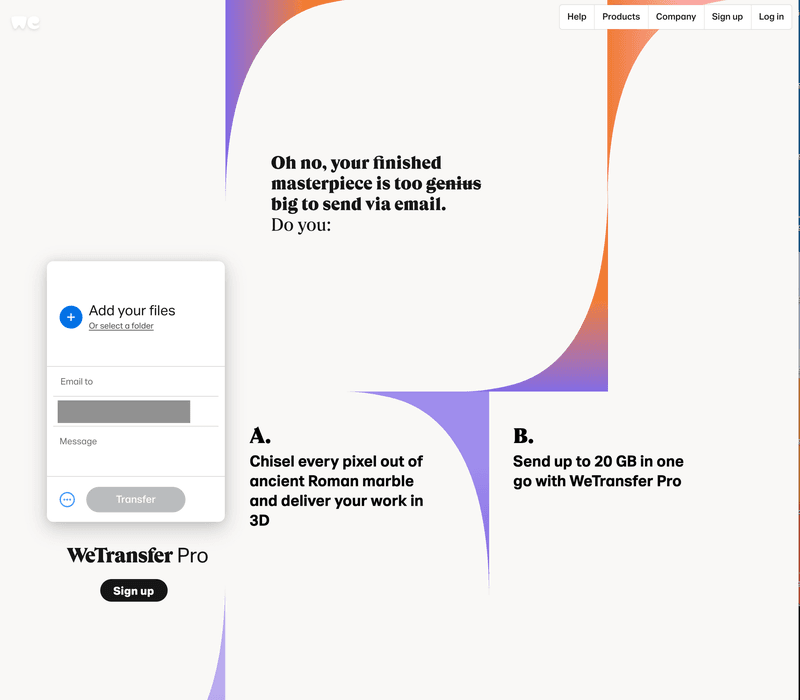
And introduce the benefits of their Pro plan next, while prompting you to ”Say hello” – one of the simplest and friendliest CTA that I bet has a high conversion rate.
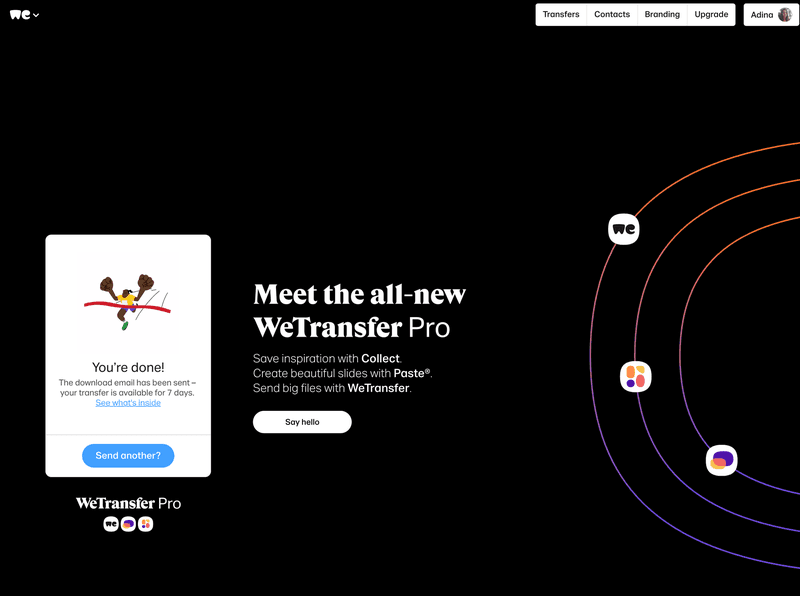
Asana – Drive account expansion by offering trials to premium features
This is the best SaaS marketing 101. We know contextual experiences drive the best results.
Asana doesn’t hide their premium features from their freemium users – by showing features relevant for freemium users, they pique their interests and leverage the opportunity to offer a trial. Testing the features and experiencing the value will lead to an increase in account upgrades.
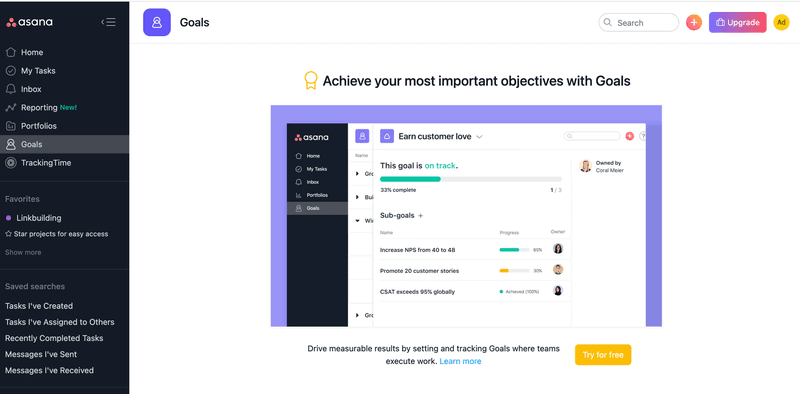
SaaS Product marketing examples #4 – Positioning
Positioning is all about communicating how you want your user to think and feel about your product. Check the following examples of positioning from some of the best SaaS companies out there.
Coda – Focus on the user’s pain points
Coda is a brilliant example of positioning done right. They use simple and direct language aimed at their target audience – it’s easy to make the connection and understand what the tool does if you are having issues working with spreadsheets.
It’s also funny and shows their personality, making them more than your run-of-the-mill SaaS. Coda has real people behind it and that matters to users.
They also let the reader fill in the blanks with their issues/pain points when it comes to spreadsheets – making the spreadsheet a villain and Coda the hero. It’s creative, humorous, and universally appealing.
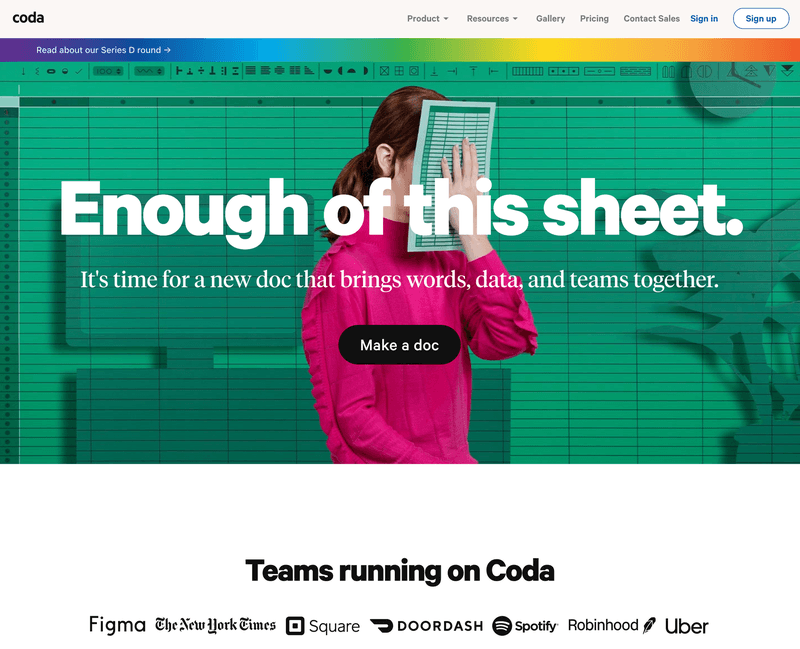
Framer – Simple and straightforward
What more can we say about Framer other than it’s simple and straightforward? It does exactly what it says, and it uses simple words throughout its content.
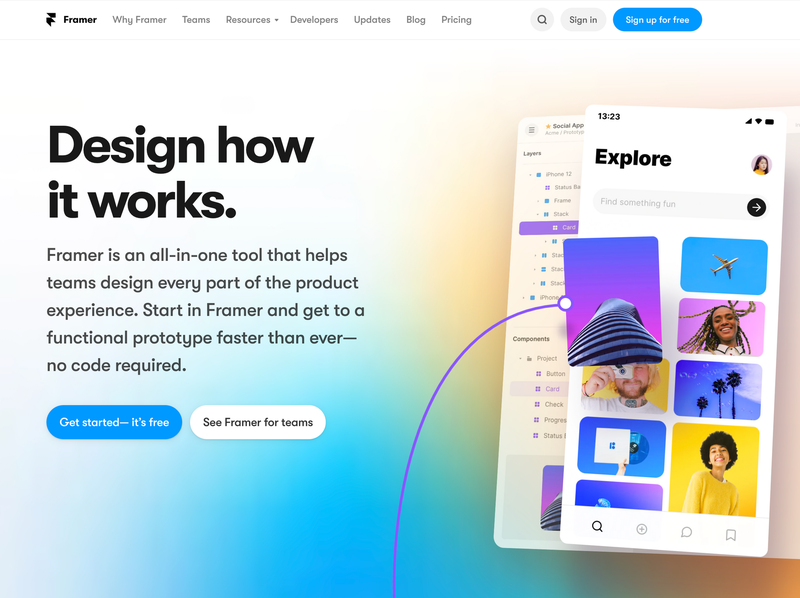
Miro – Constantly adapting
Miro is an online whiteboard and visual collaboration platform designed for teams. They immediately highlight who it’s for and what’s the job it helps fixing – bringing teams together – and they clearly adapted their wording to fit the new ways teams are working: hybrid or work from home, etc.
Their content marketing uses the most relevant words that describe teams in today’s context, making it easy for the reader to self-identify, and positions Miro through a clear context.
- distributed
- work from home
- telecommuting
- remote
- hybrid
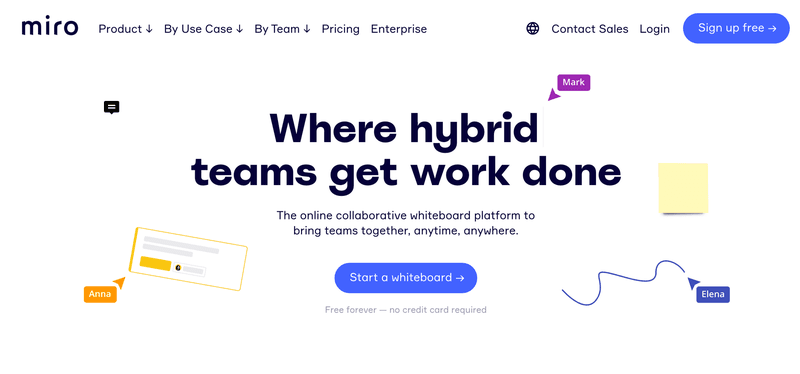
Their landing page is not static, so they circulate the USPs to reflect different ways of referring to their audience.
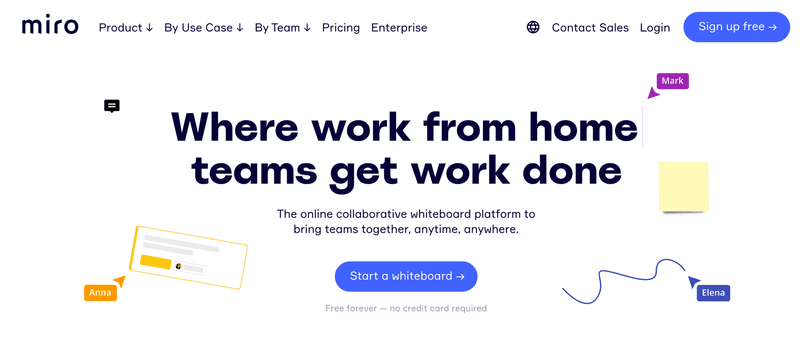
SaaS Product marketing examples #5 – Content marketing
Content marketing is pretty self-explanatory and it’s one of the best SaaS marketing strategies used. Check out the following examples of great content marketing to model your approach.
Userpilot – Using content to educate the target audience and generate leads
Creating content that educates users is a fantastic content marketing tactic. It helps your product content marketing strategy in multiple ways, including:
- building brand authority
- helping with SEO and organic traffic
- lead generation
One great example of content that achieves all of the above is Userpilot’s State of SaaS Onboarding 2021 report.
Put together using 1000s hours of research, 200+ data points, and 1200+ SaaS companies, it gives users insights into the industry and since this is a topic of interest for Userpilot’s target audience, it’s a great way to acquire leads.
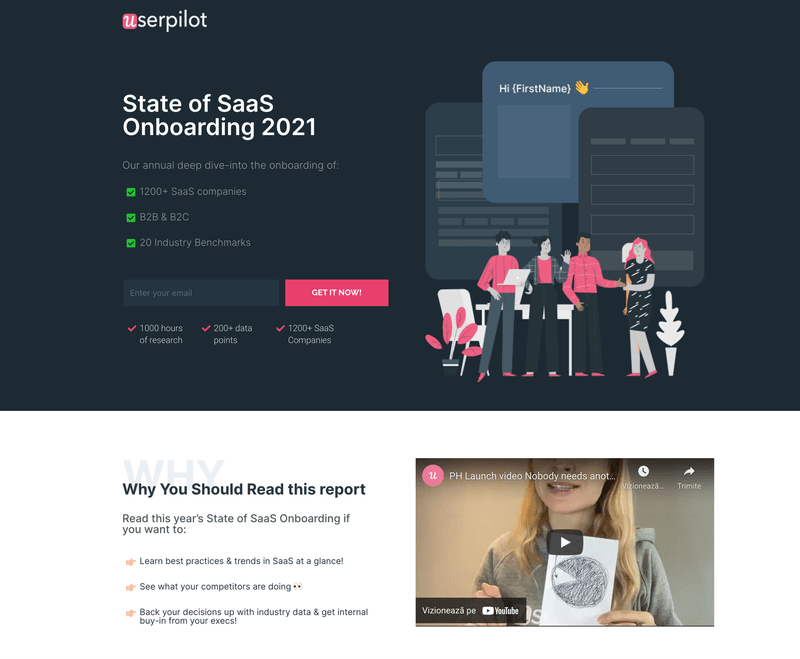
Hubspot – Generating high qualified leads by helping their users
Hubspot is another great example of using content marketing to help users – their product is highly optimized for the target audience’s needs.
Hubspot’s ‘Build My Persona’ tool is an engaging way to build a persona when you don’t have enough data.
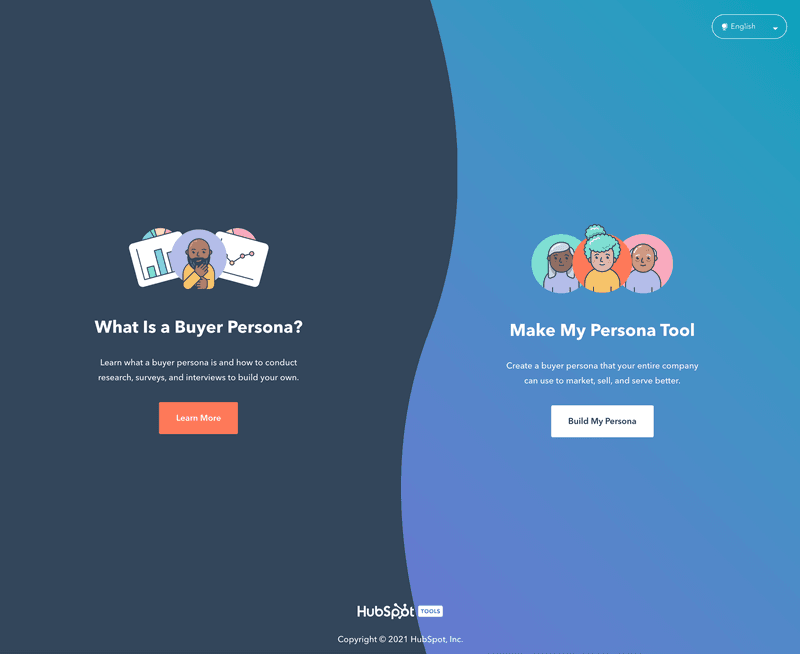
It takes you through what a persona is, why it’s important, and how to use it. It also guides you through a form.
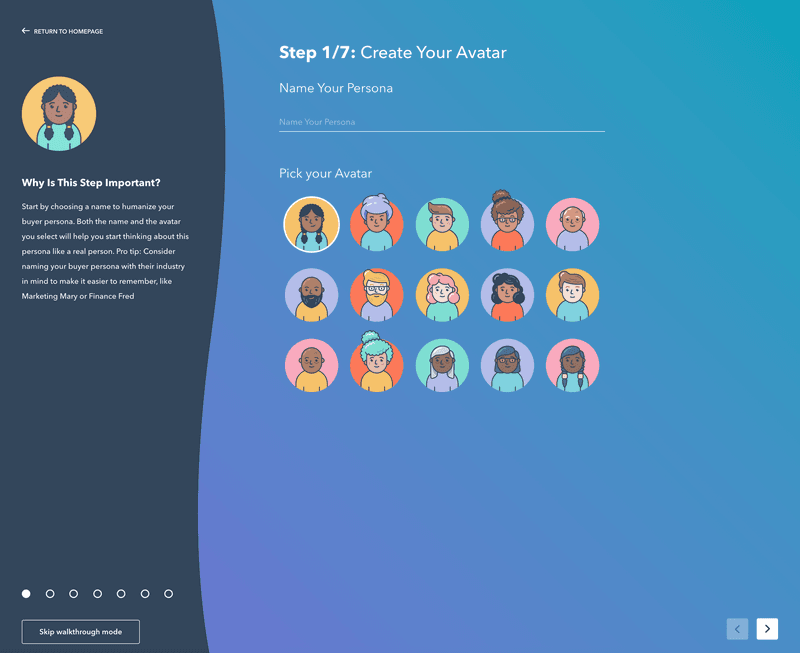
Once completed, in exchange for your email address, you receive your persona build with the data you provided.
It’s quick and easy to do – and the help they give their users generates highly qualified leads.
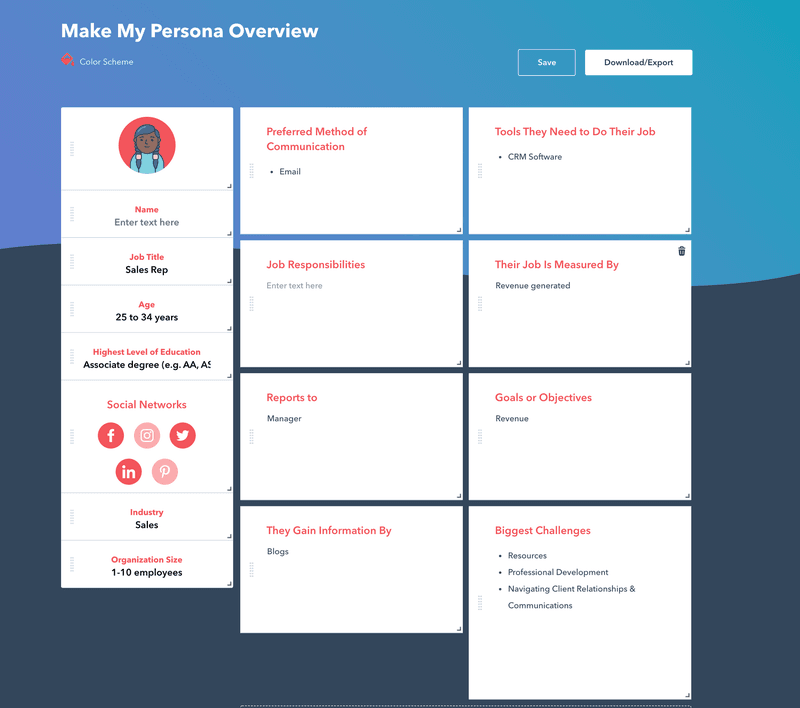
Zendesk – ”Zendesk Alternatives”
Zendesk is a customer service software that, according to their LinkedIn, is the “champion of great service everywhere for everyone”.
Like Coda, Zendesk uses humor to reach their target audience – previous users they want to win back. They created a hilarious fake alternative rock band called Zendesk Alternative that really takes advantage of SEO: when you search for Zendesk competitors, up pops Zendesk Alternative, which takes you straight back to Zendesk. Genius content marketing!
The made-up band’s description features the brilliant line, “On the surface, it’s a collection of songs about customer service.
Underneath, it’s about so much more.”
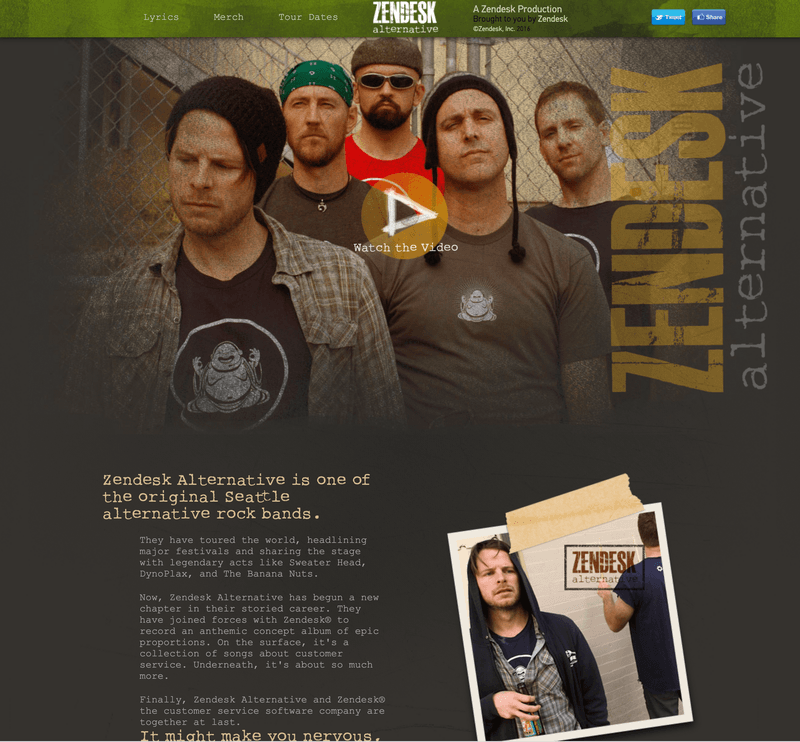
SaaS Product marketing examples #6 – Email campaign
Email marketing can be a really effective tool for SaaS companies – if it’s used correctly. Check out the following examples of great email campaigns.
Userpilot- Product Rantz newsletter
One of the most effective SaaS marketing strategies to nurture your audience is a newsletter. It’s cheap, relatively easy to produce, and can help your SEO ranking.
They can be tricky though. You have to make it interesting and provide the right information to your readers – information they value and will find useful.
Userpilot does just that with the Product Rantz – an email newsletter sent each week full of valuable information about product growth, management, and industry trends through actionable insights.
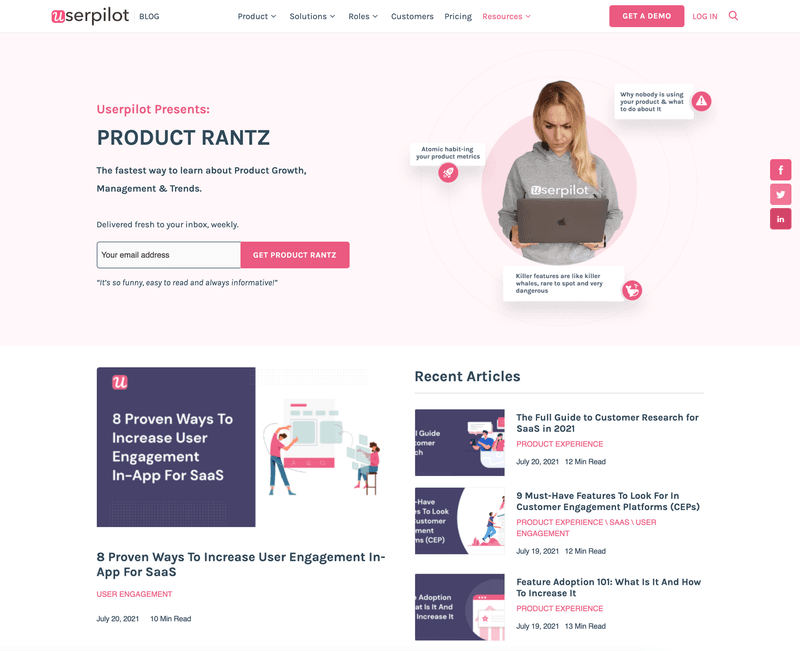
The secret that makes this a great product marketing example for the acquisition stage is that it’s not focused on sending an update on the latest published articles on the blog, but to bring actionable insights that help the reader.
Here’s an example:

ActiveCampaign – Bringing users back in product with email
In-app product marketing tactics won’t work if your users don’t log in – obviously! This means you need a strategy to engage with users outside the app and bring them back.
One of the easiest ways to do that is through email campaigns. Email marketing campaigns work best when the emails you send are contextual – understanding the user’s wants and needs will enable you to create the best possible experience for them.
ActiveCampaign uses an email campaign to educate and bring users back inside the app during the trial period.
Check out all the emails they send:
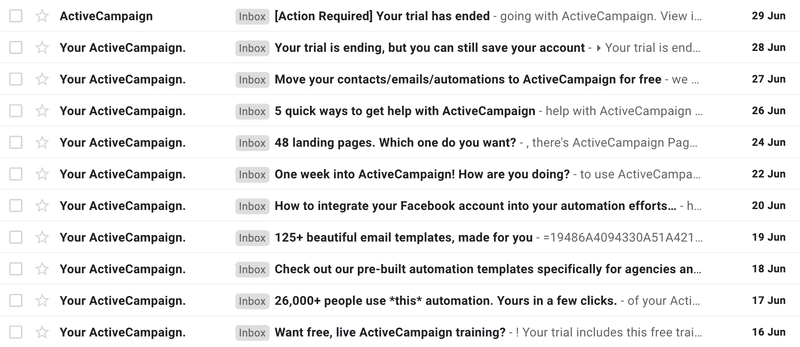
SaaS Product marketing examples #7 – Brand association
A brand association can be a difficult thing to pull off but if it’s done properly, you might not need any other marketing campaigns. Check out the following examples of brilliant brand association.
Zapier – Growing their brand by recommending other software
Recommending other software can be tricky because it won’t work for all SaaS products.
However, given what Zapier does (its business model is based on integrating with other web apps and software), this is a great product marketing campaign of how to associate your brand with other powerful brands and drive traffic to your website.
Their SEO strategy focuses on ranking for all brand and integration keywords, and they created separate landing pages for each. Efficient and impressive!
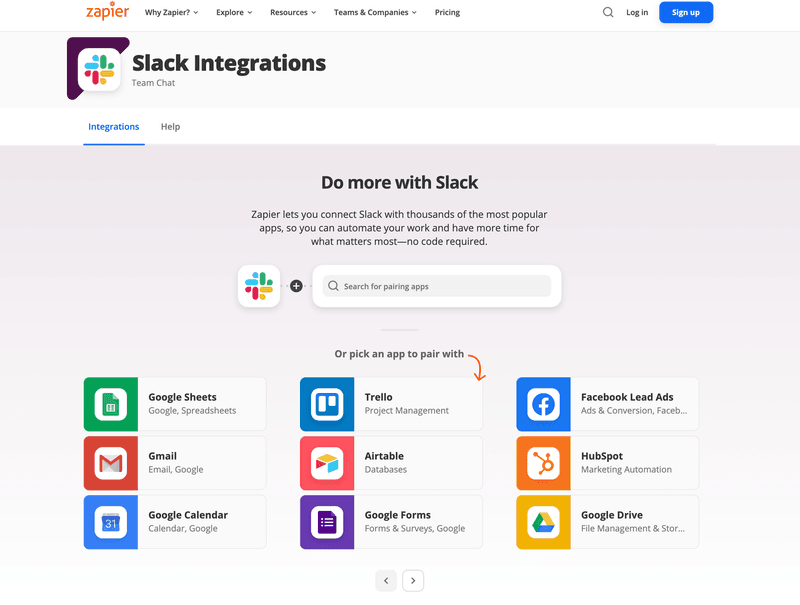
Jet Admin – Leveraging brand association
Zapier didn’t invent the wheel here, folks. Other brands that leverage brand associations and highlight their integrations as a way of attracting new users, including Jet Admin.
If your SaaS integrates with other tools, creating dedicated landing pages is a start – but you can go a step further by optimizing the account signup flow and onboarding for each specific use case.
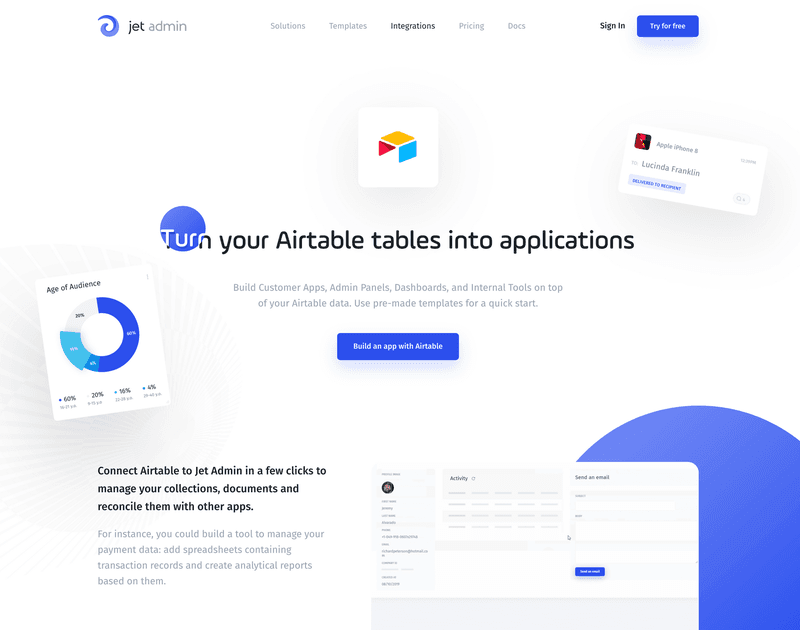
Jet Admin not only created dedicated landing pages for the most popular software integrations their customers use, but they also simplified the app-building process, so the user is a few steps ahead from starting from zero – definitely appealing from a user’s point-of-view.
When users click on ‘build an app’ with Airtable, they get to a custom screen that allows them to get started really fast and easily.
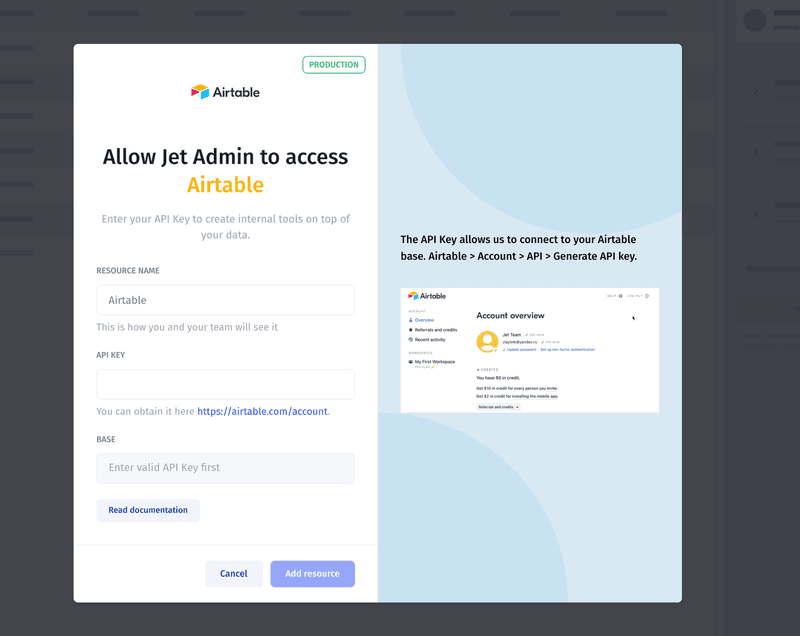
SaaS Product marketing examples #8 – Outdoor Branding
How do you stand out from the crowd when you use outdoor branding? By using emotions.
I think the example below says it all, being one of the best marketing campaigns for the outdoor.
Spotify – ”Thanks 2016, it’s been weird.” Campaign
It’s been a while since Spotify’s outdoor marketing campaign but it’s worth mentioning.
It’s the perfect example of how using product usage data can give you an insight not only to improve your product but to connect with your audience and build a strong brand. It shows users that the company actually pays attention to their listening habits.
Spotify is fantastic at humorously engaging with both individuals and larger groups through their outdoor billboard product marketing.
Two great examples from their “Thanks 2016, it’s been weird” campaign – “Dear person who played “Sorry” 42 times on Valentine’s day, what did you do?” and “Dear 3,749 people who streamed “It’s the End of the World As We Know It” the day of the Brexit vote, hang in there”.
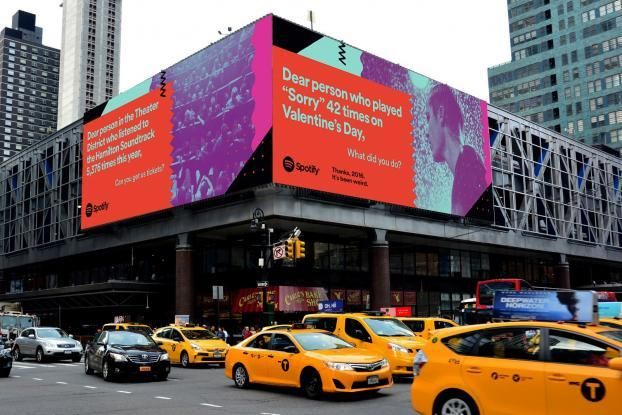
Conclusion
So now you know what makes great SaaS product marketing!
It’s all about understanding your user’s needs and demonstrating how your product solves their job-to-be-done in an engaging, personalized, and creative way.
Want to deliver personalized in-app experiences? Get a Userpilot Demo and see how you can increase growth metrics at every stage of the user journey.


